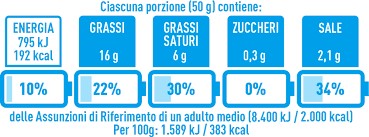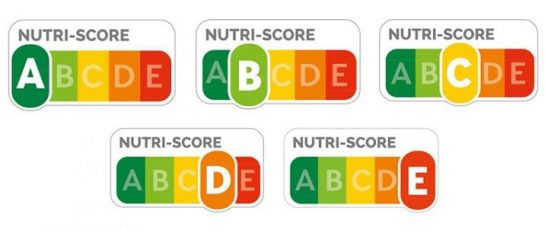Front-of-Pack Nutrition Labelling: The Italian NutrInform Battery, the French NutriScore and Other National Proposals
Giorgio Rusconi and Omar Cesana of Mondini Bonora Ginevra Studio Legale highlight the issues surrounding national and local variations in front-of-pack nutrition labelling, with a particular focus on Italy and France.
Giorgio Rusconi
Omar Cesana
Fragmented Nutrition Labelling Across Europe
While waiting for harmonisation at European level, a proliferation of national regulations introducing different rules for nutrition declarations on front-of-pack (FOP) labels has occurred. In an increasingly fragmented scenario, the first pronouncements of local authorities aimed at safeguarding correct and non-misleading communication to consumers has also been observed.
Regarding nutrition declarations, Article 35 of Regulation (EU) No 1169/2011 provides that, in addition to the forms of expression prescribed by the Regulation, the energy value and the amount of nutrients may be indicated by other forms of expression and/or presented using graphical forms or symbols, provided that the following conditions are met:
- they are based on accurate and scientifically substantiated consumer research and do not mislead consumers;
- they have been developed from consultation with a wide range of stakeholder groups;
- they are intended to facilitate consumer understanding of the contribution or importance of the food to the energy and nutrient content of a diet;
- they are supported by scientifically based evidence as to their comprehensibility by the average consumer;
- they are based on harmonised reference intakes or generally accepted scientific advice;
- they are objective and non-discriminatory; and
- they do not create obstacles to the free movement of goods.
As early as 2017, the Commission had already started reflecting on the use of additional forms of expression and presentation, their effect on the internal market and whether they should be further harmonised. To date (May 2023), however, no European proposal harmonising the matter has taken place and, therefore, there has been a haphazard development of different additional forms of expression in the individual member states for so-called FOP (front-of-pack) labelling.
The So-Called Italian NutrInform Battery
With the Decree of 19 November 2020, Italy adopted the so-called “NutrInform Battery” scheme, notified through the TRIS System of the European Commission on 17 January 2020 (Notification Number: 2020/31/I). The NutrInform Battery is a trade mark, which can be used by operators and distributors of food products marketed in Italy and in the single European market. The right to use the trade mark is granted free of charge to all operators who communicate their willingness to do so by registering on the appropriate section of the Ministry website.
The graphic design of the NutrInform Battery consists of columns (reference intakes) supplemented by the reproduction of individual “batteries” representing: energy; fat; saturated fat; sugar; and salt. The calculation is based on an indication of actual food intake portions and not on a standard parameter (eg, 100 g or 100 ml). The use of colours is very limited and favours only white, blue and light blue:

The NutrInform Battery focuses the consumer’s attention on the nutrient content of the portion of the food actually consumed, without specifically banning or promoting any of it, but giving information on how and how much that portion of the food will fit into the daily food intake. The aim is to guide the consumer towards more informed nutritional choices and to accompany them on a path of improved food knowledge.
The French NutriScore
The so-called NutriScore is the supplementary form of expression of nutritional declaration adopted by France, qualified as a collective mark notified in the TRIS system (Notification number: 2017/159/F).Unlike the Italian proposal, this mark expresses the nutritional quality of the food through two related scales: a chromatic one divided into five gradations from green to red and an alphabetical one with letters ranging from A (highest quality) to E (lowest quality) whose technical characteristics are referred to in the regulations for use of the collective mark.

Foodstuffs are thus divided into the above classes on the basis of a score calculated by means of a complex algorithm that subtracts from the total value of the “unfavourable” elements (energy/calories, saturated fatty acids, simple sugars, sodium) that of the “favourable” elements (percentage of fruit, vegetables, pulses and oilseeds, olive oil, walnuts and rapeseed, fibre, protein). The score used for the calculation, irrespective of the type of food, refers to a quantity of 100 g or 100 ml.
The Opinion of the Italian Authorities on NutriScore
The Italian authorities have never made any secret of their dislike for the transalpine practice linked to the adoption of the NutriScore. As of November 2021, the Italian Antitrust Authority (AGCM) started a series of investigations on the use of the NutriScore labelling system in Italy, which led to the opening of several proceedings concluded on 12 July 2022 with a measure of acceptance of the commitments proposed by the professionals. Only one case resulted in an administrative sanction for unfair commercial practice. The activity initiated by the AGCM was aimed at assessing the suitability of the NutriScore to be, at the present time and in the absence of related information as to the nature and operation of the parameters on which the assessment expressed is based, an additional piece of information capable of guiding consumers’ purchasing choices. According to the AGCM’s examination, the NutriScore appeared unsuitable to guarantee correct information, so much so that it could be considered misleading. Similar considerations and evaluations were taken up more recently by another decision of 2 December 2022 whereby the AGCM inhibited the use of the NutriScore by a food business operator.
Other Examples of FOP Labelling
The FOP labelling systems just described are not the only ones in use in various national markets. Since 2013, the UK has introduced a voluntary “traffic light” FOP labelling system, which associates a colour code with a reference intake percentage. The colours are used to indicate high (red), medium (yellow-orange) or low (green) levels of certain substances. In addition to the colours, companies may also include the descriptors “high”, “medium” or “low” to reinforce the meaning of the claim.

The Keyhole logo is the FOP system adopted by Sweden (and later by Denmark, Lithuania, Norway and Iceland) and is graphically presented as a green lock. The label regulation was notified through the TRIS system on 26 June 2020 (Notification number: 2020/396/S). It is a voluntary, free-of-charge label that indicates the healthiest food choice within 33 specific food groups (eg, bread, cheese, ready-to-eat meals) based on nutritional criteria such as level of fat, sugar, salt, whole grain or dietary fibre. The label cannot be used for products with a low nutritional value, such as salty snacks or soft drinks.
Finland approved the “Heart Symbol – Better choice” logo in 2000. The criteria for its use (fat, salt, sugar and/or fibre content) are defined for nine main food groups. The right to use this label is granted by experts appointed by the Finnish cardiovascular disease and diabetes associations, and is allowed against payment of an annual fee.
In Slovenia, the voluntary “Protective Food” (also called “Little Heart”) logo was introduced in 1992 and applies to pre-packaged foods that meet specific nutritional criteria. In Croatia, the “Healthy Living” logo managed by the Institute for Public Health is granted to foods that comply with specific nutritional criteria.
Mondini Bonora Ginevra Studio Legale
2 ranked departments and 3 ranked lawyers
Learn more about the firm’s ranking in Chambers Europe 2023
View firm profile

